March 12, 1935
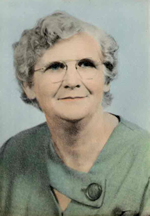 Born in Louisville, Mississippi.
Born in Louisville, Mississippi.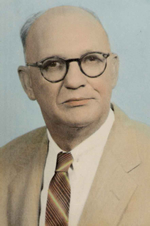
“I think of that of sort of the beginning of my work for hospitality; mother was always receiving people, somebody having trouble coming through; there was that sense of looking after people; it was kinda like everyone was welcome”
” ‘Be good, keep on being good.’ Those were her last words spoken to me.”
-Father David Kirk, Interview with Kirk Barrell, December 2004
1935-1949
 Childhood living in Mississippi, Alabama, and Arkansas.
Childhood living in Mississippi, Alabama, and Arkansas.
“All through my boyhood, I must say I loved the South in certain ways: the easygoing life, my mother’s deep sense of hospitality to others which led to my own natural sense, the sounds of things – like a swinging screen door or rain on the tin roof of a small porch where I slept. The smells of collard greens or fresh butter churned. The Huckleberry Finn moments on the River.”
Seeking Truth On The Banks of The Mississippi, Father David Kirk
“Once we lived in a house on stilts twice a mans height, ready for floods, with an outhouse, lamp light, no running water. I was waterboy among sweating field workers in cotton fields and waterboy, bringing numerous daily buckets of water from a spring, for washing clothers, house cleaing, baths. I would often lay in the grass by this stream naked, dig my toes in the grassy earth, look up at a blue sky and trees waving with the wind and seeing a kind of geography of the universe. I would lay on the grass dream about a golden city up ahead and heroic brotherhood there, battling for justice. Listening to the thrilling whistling of the Southern Railroad, rushing into the future. Sometimes I think this boyhood sceen was the groundwork for a prep into the universe that is God, and the dreams and visions I could hold to my heart. I do not know that I ever thought about God, or if God was, in my boyhood. My boyhood passed like a swallows flight, living on both sides of the Mississipii River. We were poor, but never really knew it.”
“Even as a little boy I had eyes that could see and I saw deeply: racism, sharecropping, nigger shacks, lynching before the Courthouse square, hounddogs, white citizens council. Since the nearest white boy was 10 miels away, my playmates were black kids, sharecroppers, until I was 12. After then, there was no place, no space where you could simply speak with a black person.”
Notes on a Journey on a Road to Emmaus, Father David Kirk
Audio of Father David speaking about growing up in the south. (WAV format 1.64 Mb)
1949-53
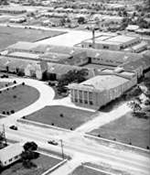 Vigor High School – Prichard, Alabama
Vigor High School – Prichard, Alabama
“My last year of high school—my family were gypsies and I had a different school every second year it seems—I decided I had to confront the cruel issue of racism, try to stand in another persons shoes, so to speak. Editor of the high school paper, in the days before any desegregation, two of us asked the Superior of Education to let us enroll in a black high school for 1-2 months and do a paper on black education; amazingly, he approved. Those 40 days had me seemingly representing the whole white race, as teachers and students bombard me with question I could not answer. I left that school radicalized and ready for action.”
Notes on a Journey on a Road To Emmaus, Father David Kirk
Audio of Story (WAV format 2.88 Mb)
1953
Military Draft
“Suddenly, I got a letter from my draft board. I was a patriotic American and never thought about these issues. But somewhere I read: don’t kill, don’t even hold onto anger; if you live by the –gun, you perish by the gun. I presented myself to my draft board in a little town, Prichard, Alabama. They had never heard of an Eastern Church. In those days, no one got draft exemption except Quakers. I simply told them, ‘I am an Eastern Christian, an Eastern Catholic, a part of the great Church of Antioch; my faith does not allow me to kill nor to be a part of any organized effort to kill, dominate of oppress’. They gave me no hint; I left, knowing I would be arrested shortly. I’m told I was the first non-Quaker not to go to jail, usually 4-7 years.”
Oversimplified Notes, Father David Kirk
1953-57
University of Alabama: Bachelor of Arts Degree in Social Sciences
“Suddenly the Supreme Court announced the desegregation of education facilities, the first to be Ms. Arthurine Lucy at the University of Alabama that fall. A handful of us formed a protection group to surround her to classes. Mobs with broken down cars and shotguns sticking around. Students were acting like mobs. On the last day, going with Arthurine to class, a violent shouting mob chased her, we rushed her into the nearby library, locked the doors, moved every student or worker out. We stayed there til 3 a.m., then skipped her out to safety when everyone seemed to be gone, tucked her on the floor of the backseat, covered by a blanket. Arthurine was alive and back home. She was never allowed to return. Years later, under President Kennedy, two other black students entered and ended segregation there. It was not pleasant for the few of us who defended her. Just not the usual friendliness. Except I was picked up by a car of a few white racists, driven to a corn field, beat up, and left there. A farmer picked me up on a nearby road and took me to the university hospital. I was ready to go jump in clear water again. I was getting closer to finding that heroic community up ahead. ”
Racism: White Boys Can Jump, Father David Kirk
“As a humanist and socialist, my conversion to Jesus Christ in the Church, 1953, came in the midst of violence and race riots at the  University of Alabama, when the Supreme Court demanded that the first Black student, Arthurine Lucy, be admitted to a southern university.”
University of Alabama, when the Supreme Court demanded that the first Black student, Arthurine Lucy, be admitted to a southern university.”
The History of Emmaus as a Melkite Ministry, Father David Kirk
1953
Conversion to Christianity
“Church was an unknown experience, except when sitting on the steps of a little wooden black church in 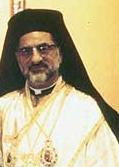 Mississippi, listening to the music. I set about living daily my Christianity. I had the Scriptures and a book of the Fathers from Fr. Joseph. I took each point and started practicing, as I grasped each point. Life simply suddenly presenting me with situations, to which I had to respond as a Christian.”
Mississippi, listening to the music. I set about living daily my Christianity. I had the Scriptures and a book of the Fathers from Fr. Joseph. I took each point and started practicing, as I grasped each point. Life simply suddenly presenting me with situations, to which I had to respond as a Christian.”
Oversimplified Notes, Father David Kirk
“After my baptism and chrismation, I studied Scriptures with Fr. (later Archbishop) Joseph Raya and somehow Matthew 25 and Luke 4 struck me like lightning. The mission of Jesus, I knew, was my mission.”
The History of Emmaus as a Melkite Ministry, Father David Kirk
“In those days, I noticed that everyone seemingly involved in this movement were Christians. At the University of Alabama during the crisis, I went to all churches for support; the only persons who spoke for the equality and unity of humanity was a Catholic priest. All ministers were racist openly. Found the Roman Catholic church more mysterious than “mystery”; protestant churches all centered on one man, preaching long. Someone told me that there was another half of the Church – “the Eastern churches”. I did not know the difference at the time, but nearest was the Melkite Catholic church in Birmingham, much farther away- was a Greek Orthodox Church. I hitchhiked to Birmingham and found Fr. Joseph Raya, a dynamic, open extraordinary priest.”
“Fr. Joseph taught me orthodox Christianity and a whole new way of looking at God, humanity, church, etc. Different because of its stress, its emphasis, its traditional sources from which it draws food, image and likeness of God leading to the deification of the human person, the God of love unfolding himself into time, the really real, the ground of our being, living to our fullest potential (which is God), Christ and the New Humanity, the spirituality of the heart, the goodness of people. I can remember a hundred teachings because they shocked me, knowing what I had heard from “religion” in the deep South.”
“I set about after I realized I had found my home and was duly baptized and chrismated; it seemed like there was a chorus of hundred 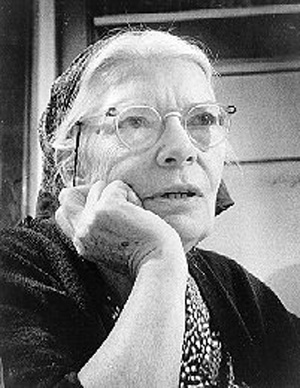 angels and spiritual beings in that lonely chapel that day.”
angels and spiritual beings in that lonely chapel that day.”
“There were no way blacks and whites could meet and discuss problems. Therefore, I went to the Roman Archbishop in Mobile and asked permission to start a Catholic Interracial Council with a then new and unknown minister, Dr. Martin Luther King Jr., recently assigned to Montgomery. The Bishop refused and I anxiously wrote Dorothy Day. ‘You do not need permission to do good; the Gospel gives you that freedom,’ she wrote back. Dorothy had clearly given me a direction for my life.”
“I realized I was a part of the pioneer network, pre-civil rights, before the larger Martin Luther King campaigns, to which I related after as well. But please understand: I was never a leader; I was a foot soldier, there to support, which I thought was the white person’s role.”
17, a Socialist; 18, an Eastern Christian; A boy and Mr. Faulkner, Father David Kirk
“I was lonely in Mobile for brothers who shared the same radical vision of the Gospel. I was about to accept a teaching job, get married and buy a car. But the Gospel stuck like a grape in my throat.”
The History of Emmaus as a Melkite Ministry, Father David Kirk
1960-64
 Seminary in Rome at Pontifical Beda College
Seminary in Rome at Pontifical Beda College
Associated with Pontifical Gregorian University, Pontifical Biblical Institute and Pontifical Institute of Eastern Christian Studies; supplemented by studies at the Russicum and Oriental Institute, nine month work/study trip to Eastern Christian ministries to the poor in Greece, Turkey, Syria, Lebanon, Jordan, Israel-Palestine, and Egypt.
“In 1960 I left Dorothy and the Catholic Worker work for the poor to study for the priesthood in Rome, for the purpose of returning to work as a priest among the poor. Patriarch Maximos IV sponsored me for studies for the Patriarchal clergy for the United States of America with the condition that I work, not in a parish, but in a ministry for the poor.”
The History of Emmaus as a Melkite Ministry, Father David Kirk
“You are studying and you are being ordained a priest for the poor,” not for parochial and parish duties.”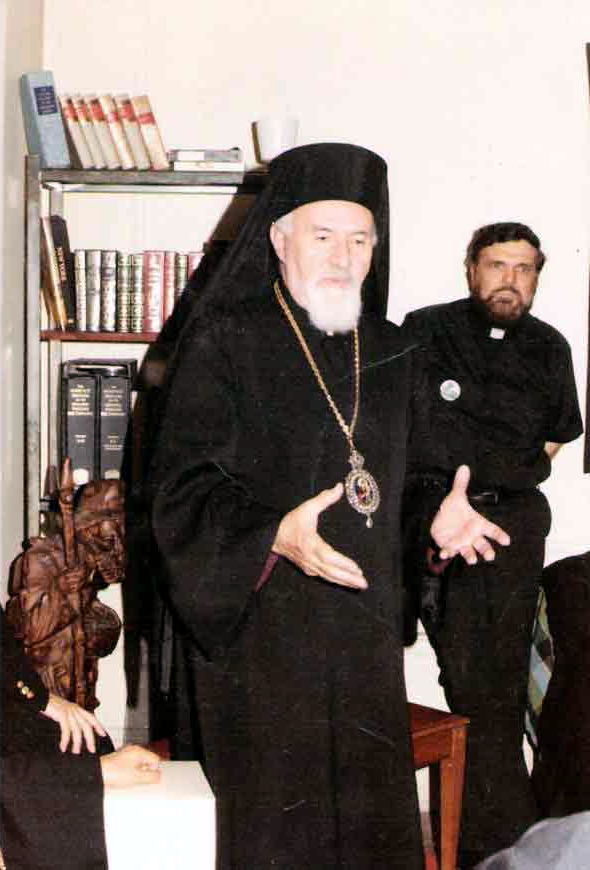
Patriarch Maximos IV, Ordination sermon and letter Reg. XV No 315
“Dorothy Day came to Rome and together we met the Patriarch and explained her work and the context of my future ministry; It was a wonderful meeting of minds and hearts.”
Dorothy Day, On Pilgrimage, 1972
Ordination as a Melkite Priest in Jerusalum
“On the Feast of Transfiguration 1964 (also Hiroshima Day) I was ordained a priest for the poor in Jerusalem at the Melkite Basilica of St. Ann, I chose this Feast because it stated how humanity could either be destroyed or transformed with energy. My first Liturgy was in the Chapel of Christ Weeping Over The City on the Mount of Olives and a proper place to begin a diakonia to the urban poor, weeping by Harlem the river. On my way to Jerusalem I stopped in Istanbul on my 4th visit to the Patriarch Athenagoras of Constantinople.”
The History of Emmaus as a Melkite Ministry, Father David Kirk
“We should be co-sponsors of these works of mercy with Eastern Catholics; it would be the true way to unity.”
Patriarch Maximos IV, Byzantine Catholic World, August 1964
1964
Birmingham, Alabama
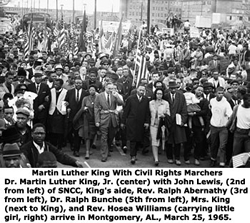 “In 1964 I served my pastoral year in Birmingham, Alabama, with Fr. Raya’s encouragement, while working on Martin Luther King’s team (in Birmingham, Selma, Montgomery, the major year of Civil Rights actions). When there was delay in setting up our diocese, the Roman Bishop of Miami offered me the Melkite Parish in Miami. But the Patriarch wrote me ‘Do not forget’ you were ordained for the poor, not for parochial duties’. Wait for the new Bishop and your mission can begin.”
“In 1964 I served my pastoral year in Birmingham, Alabama, with Fr. Raya’s encouragement, while working on Martin Luther King’s team (in Birmingham, Selma, Montgomery, the major year of Civil Rights actions). When there was delay in setting up our diocese, the Roman Bishop of Miami offered me the Melkite Parish in Miami. But the Patriarch wrote me ‘Do not forget’ you were ordained for the poor, not for parochial duties’. Wait for the new Bishop and your mission can begin.”
The History of Emmaus as a Melkite Ministry, Father David Kirk
1966
Emmaus – Phase I
 “The Melkite Diocese was established; I met with the new Melkite Bishop Justin at St. Anne’s Church in New Jersey with Fr. Albert Gorayeb and Fr. Lyle Young, where we outlined and discussed our proposal. ‘This must be a part of the work of our church, diakonia,’ the Bishop said joyfully and gave us his blessings to found the ministry of Emmaus and buy a house.”
“The Melkite Diocese was established; I met with the new Melkite Bishop Justin at St. Anne’s Church in New Jersey with Fr. Albert Gorayeb and Fr. Lyle Young, where we outlined and discussed our proposal. ‘This must be a part of the work of our church, diakonia,’ the Bishop said joyfully and gave us his blessings to found the ministry of Emmaus and buy a house.”
The History of Emmaus as a Melkite Ministry, Father David Kirk
“Starting in an abandoned building, he determined not to have a blueprint but to wait for Harlem to tell him about its needs. Soon, a mother and a child in a cold winter were thrown out of their home. The same day, an old man who had no heat in his building moved into Emmaus rather than freeze. Emmaus had found its calling.”
The Story of Emmaus, Father David Kirk
“Alas, Cardinal Spellman disagreed. Immediately he called me in and told me. ‘Work for the poor belongs to the Roman rite.’ I respectfully disagreed, ‘this would be good news for Eastern Christians at the Last Judgement;’ a public battle began; National progressive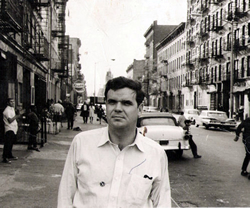 Catholic leaders led a large protest write-in and the Archdiocese backed away.”
Catholic leaders led a large protest write-in and the Archdiocese backed away.”
The History of Emmaus as a Melkite Ministry, Father David Kirk
Documented in: “The Cardinal, Dorothy Day and David Kirk”, AMERICAN POPE, Biography of Cardinal Spellman; “David and Goliath”, NEW YORK TIMES MAGAZINE 1967
“We are first an ecumenical community, a setting for sharing and human transformation: the Emmaus Children’s School, House of Hospitality, Ministry of Availability, draft counselling, problem clinics, educational purposes to increase white social awareness, etc. We work for the renewal of the Church through a communcations project for new communities and ministries; we publish The Bread is Rising, pipeline newsletter etc. Finally, we are a center for urban encounter, with some sixty conferences annually.”
The Road to Emmaus, The Story of Emmaus in Harlem, Jim Brady
1969
Emmaus International is Born
“Abbe Pierre called for a meeting of communities to form an international organization. The newspapers called it the parliament of ‘The Parliament of the Poor’. There we founded Emmaus International, headquarters in Paris. Thus, Emmaus/Harlem was the first member of Emmaus International.”
The Story of Emmaus, Father David Kirk
1972
Emmaus Loses Steam
“He had known for some time that the work of his life would be involved with the poor, had in fact formally committed himself to such a life. Now, after several years at Emmaus House, he felt he was not being faithful to that commitment. The neighborhood service group that had been treated there was, to his mind, no longer serving. ‘It was a terrible ending,’ remembers Lyle Young. ‘Things were running down. A high-pitched force will peter out, and we ran out of steam. it’s one of the problems of a diverse community, held together by enthusiasm, adventurousness and publicity. We began to become sick of each other. We never did have enough internal discipline. We weren’t faithful enough to religious disciplines. We began to become selfish. It dissolved. It was in its day,’ Lyle says, ‘a marvelous reflection of the interesting changes taking place in the church and society, the good things.’ Kirk too, has put the experience in perspective. “Coming back from the seminary, we got swept up in the Sixties, and our work for the poor got lost. In the Sixties, there was always a debate. Now we do work.’ ”
The Road to Emmaus, The Story of Emmaus in Harlem, Jim Brady
1973
Emmaus is Reborn
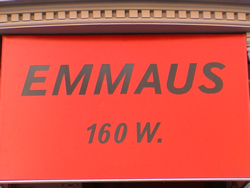 “Kirk wrote Abbe Pierre in France to say he was starting again. He had attended the first Emmaus International meeting in 1969 in Switzerland, but didn’t completely understand the principles and couldn’t see an application to Harlem then. Now, Emmaus was the perfect model.”
“Kirk wrote Abbe Pierre in France to say he was starting again. He had attended the first Emmaus International meeting in 1969 in Switzerland, but didn’t completely understand the principles and couldn’t see an application to Harlem then. Now, Emmaus was the perfect model.”
“The building had four floors, only one room of which was livable, and no stove. Kirk bought a crock pot, was responsible for all their meals, and they began renovation room by room. News that a priest had bought the house brought the needy to the door almost immediately.”
“Kirk had said that the development of Emmaus/Harlem had two stages. The first was influenced by Dorothy Day, the second by Abbe Pierre.”
“After several trips over several months, the four blocks that separate the subway entrance and the door of Emmaus/Harlem emerge as a community, a tightly-knit group of people struggling under the same poor conditions. The new address was 160 W. 120th Street.”
The Road to Emmaus, The Story of Emmaus in Harlem, Jim Brady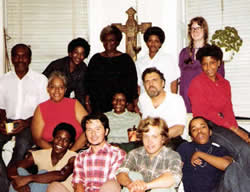
“The Emmaus ministry grew and became a pioneer in housing, grass roots organizing, AIDS care, legal justice for the poor, urban community, etc. Emmaus became the largest and most holistic Catholic ministry among the adult homeless in United States.”
The History of Emmaus as a Melkite Ministry, Father David Kirk
70’s & 80’s
 “America’s 1970’s recession sent New York City into a 20-year tailspin. By the early 1980’s, the occasional but omnipresent homeless person had multiplied so that one couldn’t pick a path through Penn Station or Grand Central station at night because hundreds of homeless people – many with children – were sleeping side by side across the wide station floors. Housing was even scarcer in Harlem. The local trade was drugs – and those who profited most from it didn’t seem to live in Harlem. In the 1980’s the trade featured ‘crack’ – cheap and highly addictive it hooked an enormous aduience who could buy it at any of Harlems’ abandoned buildings and many of the occupied ones.”
“America’s 1970’s recession sent New York City into a 20-year tailspin. By the early 1980’s, the occasional but omnipresent homeless person had multiplied so that one couldn’t pick a path through Penn Station or Grand Central station at night because hundreds of homeless people – many with children – were sleeping side by side across the wide station floors. Housing was even scarcer in Harlem. The local trade was drugs – and those who profited most from it didn’t seem to live in Harlem. In the 1980’s the trade featured ‘crack’ – cheap and highly addictive it hooked an enormous aduience who could buy it at any of Harlems’ abandoned buildings and many of the occupied ones.”
Anne Troy, former Emmaus staff, personal communication
1982
Emmaus Serves Harlem
“In January, 1982, when Kirk 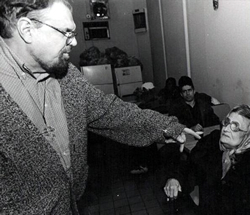 reported again to the Emmaus International newsletter, the population of the Emmaus community was now 25. He boasted that Emmaus/Harlem was the only resource for homeless people above 96th Street in Manhattan. He also noted that the profile of the homeless person had changed. Ten years before, the typical homeless person in a shelter was 55, white and was suffering from alcoholish, he said. IN 1982, the average person in that shelter was black or hispanic, young and a drug abuser. Without a job, you could not get an address. Without an address, you could not get a job. Emmaus is an idea whose time had come.”
reported again to the Emmaus International newsletter, the population of the Emmaus community was now 25. He boasted that Emmaus/Harlem was the only resource for homeless people above 96th Street in Manhattan. He also noted that the profile of the homeless person had changed. Ten years before, the typical homeless person in a shelter was 55, white and was suffering from alcoholish, he said. IN 1982, the average person in that shelter was black or hispanic, young and a drug abuser. Without a job, you could not get an address. Without an address, you could not get a job. Emmaus is an idea whose time had come.”
The Road to Emmaus, The Story of Emmaus in Harlem, Jim Brady
1982
Emmaus Purchases the Charles Hotel
“Fr. Don Sakano, the Director, 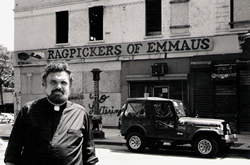 knew of a building on 124th St. and Lexington Ave. that was up for sale. As far as they could determine, it had been constructed as, and had always remained, a hotel. It now had a reputation as a haven for drug sales and prostitution. It was a symbol of the malaise which hit East Harlem in the late 1970’s and early 1980’s. Emmaus was awarded the property in November, 1982. The hotel was theirs. The hotel would symbolize many things. Most obviously, its transformation would be a direct rebuttal to the drug and prostitution trades it had once housed.”
knew of a building on 124th St. and Lexington Ave. that was up for sale. As far as they could determine, it had been constructed as, and had always remained, a hotel. It now had a reputation as a haven for drug sales and prostitution. It was a symbol of the malaise which hit East Harlem in the late 1970’s and early 1980’s. Emmaus was awarded the property in November, 1982. The hotel was theirs. The hotel would symbolize many things. Most obviously, its transformation would be a direct rebuttal to the drug and prostitution trades it had once housed.”
The Road to Emmaus, The Story of Emmaus in Harlem, Jim Brady
1984
The Hotel Fire
“At 2 a.m. on March 1, 1984, a heavily drugged man was ejected from the hotel. Thirty minutes later, a kerosen-soaked torch was thrown through a window of the first floor Ragpickers Store. The comeback was slow and painful.”
The Road to Emmaus, The Story of Emmaus in Harlem, Jim Brady
1987
 Emmaus Regroups and Plans for Growth
Emmaus Regroups and Plans for Growth
“I was talking to a friend who is a drug counselor and he said, ‘when they rip the sinks off of the walls, it’s time to close.’ I said ‘They did that four days ago.’ ”
The Road to Emmaus, The Story of Emmaus in Harlem, Jim Brady
“In late summer 1987 we closed Emmaus for six weeks. Most of the household moved to other housing or shelters while Fr. David and I mapped out programs and schedules for a larger community of the homeless.”
Anne Troy, former Emmaus staff, personal communication
1989
 Emmaus Inns is Born
Emmaus Inns is Born
“I can’t begin to describe how ‘clobbered’ the Emmaus community was by AIDS. As many as four community members were dying per month – dying per monthy – out of a total of 60+ members. In 1989 Emmaus became the first organization to be awarded AIDS-funding for the poor. We also provided the first AIDS housing in Harlem or in any low-income neighborhood. New York City provided funds for an additional 20 apartments giving Emmaus a total of 40 apartments.”
Anne Troy, former Emmaus staff, personal communication
1989
Emmaus/Jericho & Emmaus Works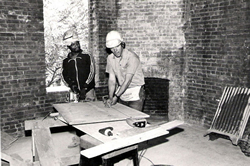
“At the brownstone on 120th Street, a project called Emmaus/Jericho was formed, in which people with construction skills would teach Emmaus residents how to rebuild the hotel, with the goal of eventually offering thes skills in turn to hlep at other housing projects for the poor in Harlem.”
The Road to Emmaus, The Story of Emmaus in Harlem, Jim Brady
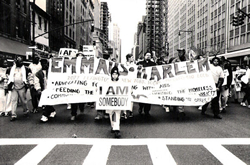 Emmaus Marches for Justice
Emmaus Marches for Justice
Father David spent his entire adult life fighting for justice. He often organized peaceful demonstrations with large groups from Emmaus.
“Father David is constantly talking about these attitudes. Injustice irritates him, and he is always eager to strike out at it.”
The Road to Emmaus, The Story of Emmaus in Harlem, Jim Brady
Other Emmaus Programs
Many additional programs were developed including the Upper Room Ministry which was an  advocacy program especially among churches and Harlem United which was the largest AIDS advocacy and housing programs in Harlem. In addition, the Urban Justice Center was created as a legal service program for human rights of the homeless and poor. Today it is one of the finest in New York City with 19 attorneys. Emmaus Harlem Stand Up Womens Project was created to rescue women from crack houses.
advocacy program especially among churches and Harlem United which was the largest AIDS advocacy and housing programs in Harlem. In addition, the Urban Justice Center was created as a legal service program for human rights of the homeless and poor. Today it is one of the finest in New York City with 19 attorneys. Emmaus Harlem Stand Up Womens Project was created to rescue women from crack houses.
1990’s
Emmaus continued on with numerous programs serving the community during the 1990’s. As Father David’s health began to decline, the program was downsized and the hotel was sold.
2000-2007
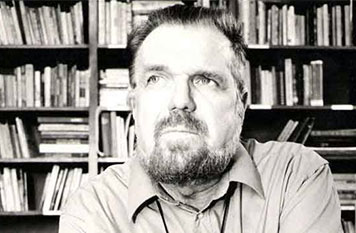 Father David’s kidneys began to fail and he eventually started a dialysis program. His loss of energy was very challenging for him as his heart was in it as much as ever. The Emmaus community carried on on a smaller, yet satisfactory level. The Emmaus residents took excellent care of Father David throughout his illness. Being the passionate reader and researcher that he always was, he sought cures for his ailing kidneys and considered a transplant. Unfortunately, his arteries were deemed too weak.
Father David’s kidneys began to fail and he eventually started a dialysis program. His loss of energy was very challenging for him as his heart was in it as much as ever. The Emmaus community carried on on a smaller, yet satisfactory level. The Emmaus residents took excellent care of Father David throughout his illness. Being the passionate reader and researcher that he always was, he sought cures for his ailing kidneys and considered a transplant. Unfortunately, his arteries were deemed too weak.
“This is a very reflective time in my life which makes me be thankful for all things, beautiful or sad, all that I have seen, heard, received. Thankful for all the welcoming roads that have lead me to deep truths and truthful people. Thankful, as I have to do so much sitting with my illnesses, for the winter wind that caresses my face and for the trees that nod to me at my window. Maybe God lets us be a little disabled so that we may see more deeply so much that we once walked by. Which means to thank the Lord for always being there and you personally for being there for us.”
Thank You Letter, Father David Kirk, January 2004
“More than a year ago when I had great hope for an early recovery, but my expectations are not necessarily those 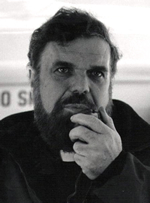 of God. I have deteriorated in a way not expected. I can no longer walk; I can stand for about thirty seconds. I have great difficulty swallowing food, my vision impaired. I have great hope, the gates of the Kingdom of God which were bolted during this time in the desert. I could not work but love has been shone to me by Orthodox Christian brothers and sisters. There is much I cannot do. I hunger for God and the Liturgy, but I can sit by the living waters are overflowing and, in a way, I sit under the shadow of Christ, I have been fed by so many.”
of God. I have deteriorated in a way not expected. I can no longer walk; I can stand for about thirty seconds. I have great difficulty swallowing food, my vision impaired. I have great hope, the gates of the Kingdom of God which were bolted during this time in the desert. I could not work but love has been shone to me by Orthodox Christian brothers and sisters. There is much I cannot do. I hunger for God and the Liturgy, but I can sit by the living waters are overflowing and, in a way, I sit under the shadow of Christ, I have been fed by so many.”
Letter to Archbishop Herman, Father David Kirk, Lent 2006
May 23, 2007
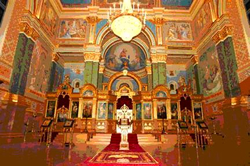 Father David Kirk died in his sleep at Emmaus/Harlem amongst the homeless as he wanted.
Father David Kirk died in his sleep at Emmaus/Harlem amongst the homeless as he wanted.
The funeral service was held at St. Nicholas Cathedral, E. 97th Street, New York City where Fr. Igumen Joachim presided.
Father David was buried at the Cemetery of the Resurrection, Staten Island, New York. He was buried close to long time mentor Dorothy Day. Final blessings were given by Fr. Pat Mahoney and Father Pat McNulty of Madonna House.
2007
Emmaus Lives On
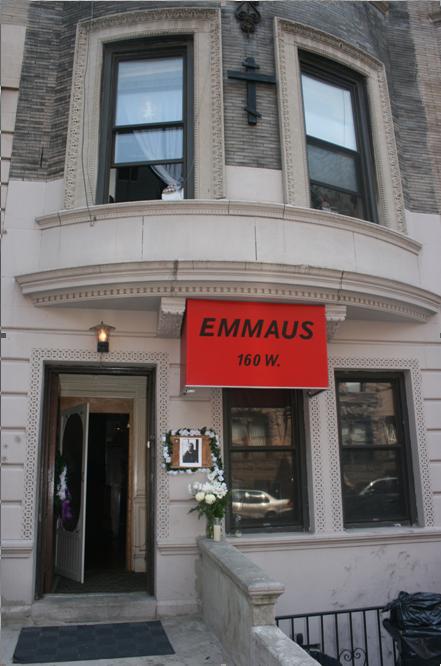 Father David’s dream was for Emmaus to live on and continue his mission. Emmaus currently has 15 residents and serves the community through several outreach programs. Emmaus is supported by a diverse Board of Directors and an external support network.
Father David’s dream was for Emmaus to live on and continue his mission. Emmaus currently has 15 residents and serves the community through several outreach programs. Emmaus is supported by a diverse Board of Directors and an external support network.
Keep Father David’s dream alive.
Or send donations to:
Emmaus
160 West 120th Street
New York, NY 10027
212-749-9404
